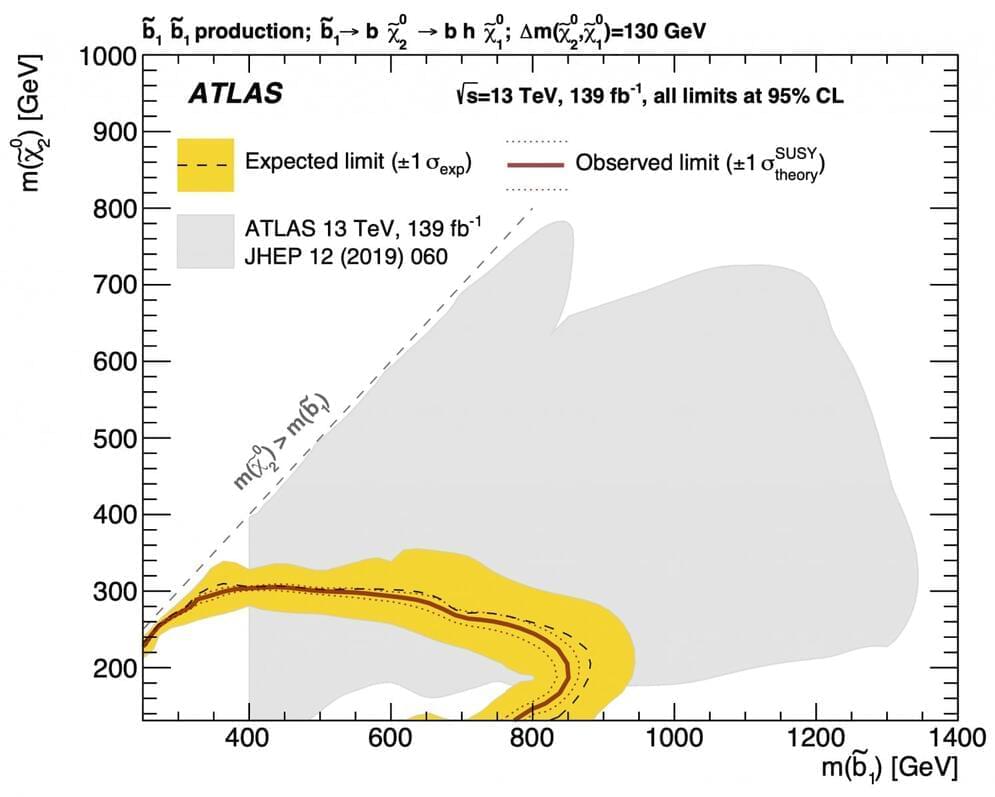When it comes to quarks, those of the third generation (the top and bottom) are certainly the most fascinating and intriguing. Metaphorically, we would classify their social life as quite secluded, as they do not mix much with their relatives of the first and second generation. However, as the proper aristocrats of the particle physics world, they enjoy privileged and intense interactions with the Higgs field; it is the intensity of this interaction that eventually determines things like the quantum stability of our Universe. Their social life may also have a dark side, as they could be involved in interactions with dark matter.
This special status of third-generation quarks makes them key players in the search for phenomena not foreseen by the Standard Model. A new result released by the ATLAS Collaboration focuses on models of new phenomena that predict an enhanced yield of collision events with bottom quarks and invisible particles. A second new ATLAS search considers the possible presence of added tau leptons. Together, these results set strong constraints on the production of partners of the b-quarks and of possible dark-matter particles.
